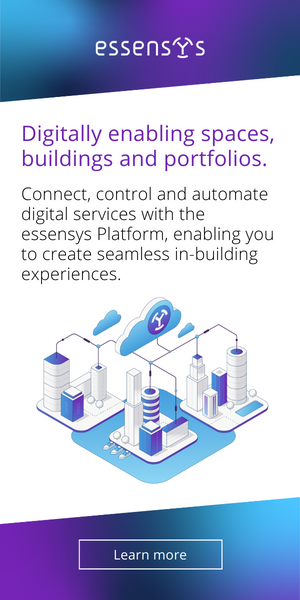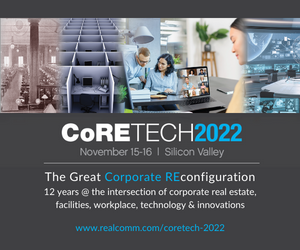The Edge. The New Building Operating Frontier

Our built environment is becoming hyper-distributed, with the edge playing a significant shift in the way we are connecting, acquiring information, interacting with it, and making decisions. The past several years has demonstrated that device and system connectivity in buildings is continuing in an upward trajectory and are delivering undeniable value to owners, operators, and occupants alike. The edge is enabling us to expand our reach to a new range of systems, equipment, devices, and applications providing relevant outcomes for operating and managing buildings.
We are seeing an increase in an edge-in approach. Here, equipment, systems, devices, and applications are built specifically for the edge. This means they are edge-native and can fully take advantage of distributed computing. With this approach, you can still bring data into the Cloud as needed, but the edge is the primary connectivity and computational resource delivering a full range of benefits.
So, what is the edge? Simply put, it is a means to connect, collect and process data at the device-level rather than in the Cloud, at the enterprise or at a remote data center. It represents device-level execution of application components traditionally associated with enterprise applications, at a place where we can process and analyze data as close to the original sources as possible.
- “Placing connectivity, computing and storage in close proximity to the devices creating the data, make it possible to analyze data in real-time, delivering faster answers to important questions, resulting in faster resolution.” -Marc Petock
Gartner recently noted that by 2025, more than 75% of all data will be processed and acted upon on the edge. That is a shift in the way businesses must think about their data including the data generated from building operational technology. This is due in part to the greater acceptance of IoT and the availability of more computer processing power at lower costs, allowing us to move from just “connected devices” to “connected intelligence.”
When it comes to devices and equipment that can reside on the edge, there are several. Equipment such as RTUs, chillers, plant level controllers, meters, sub-meters, sensors and HMIs, security cameras, gateways, routers, wireless access points, field devices, and lighting are all good examples.
Factors contributing to the edge movement:
- Breadth of connectivity options that are now available
- Data volume
- Advent of new software and applications (as devices become more intelligent, software and apps are playing a bigger role)
- Real-time data requirements
- Power and “smartness” of hardware (more powerful, more capacity, higher levels of data processing, increased storage capabilities)
- Affordability
- Open systems, open source, open programming, open hardware technologies
- Adoption of the network edge with IoT
- Flattening of the traditional architecture driven by IP
- Bandwidth challenges
- Need for reduced data overload
- Amount of data that needs to be exchanged with the Cloud (putting data into the Cloud is costly and time-consuming)
As far as the benefits and value within the built environment, the edge delivers on speed, latency reduction, scalability, security, bandwidth conservation, reduced operational costs, more data that has the potential to provide enhanced insights and data governance. The edge also enables owners and operators to be more aware and reactive in real-time to what is happening within their facilities. That, in turn, enables one to unlock new operational efficiencies and become more effective with the resources at their disposal.
The edge plays a valuable role in providing efficiency, security, and compliance and changing our building environment landscape to support an IP, horizontal architecture. Furthermore, by applying analytics at the edge, we can make more informed decisions and initiate action. This leads to a variety of advantages including proactive intervention, intelligent automation, and highly personalized experiences. It also enables building systems easier to use, extending the lifetime value of the equipment and delivering more personalized environments for occupants.
The edge is becoming an integral part of many organizations building operational strategies. Building owners and operators are looking for faster, real-time analysis of the massive volumes of data produced by their systems to improve operational decision-making. It can now be said that the data produced from a device is now more valuable than the cost of the device. We are connecting more devices and crunching more data more quickly than ever before. The edge is here, and it is here to stay.
An effective way to look at the edge is it’s not the end of the pipeline, but rather the beginning of the pipeline. Connecting, collecting, and processing data at the edge is becoming a prerequisite for today’s smarter buildings.
This Week’s Sponsor
Embracing open software/hardware platforms, Lynxspring develops, manufactures, and distributes edge-to-enterprise solutions creating smarter, sustainable buildings, better energy management systems, equipment control and specialty machine-to-machine and IoT applications. Lynxspring technologies simplify connectivity, integration, interoperability, data access and normalization and analytics from the edge to the enterprise. The company’s solutions are commercially deployed in millions of square feet in the United States and internationally. www.lynxspring.com
Read Next
 5/29/2025
5/29/2025
AI Can’t Fix Bad Data. These Ideas Can Get You on the Right Track. Real estate visionaries constantly integrate innovative technology to make their organizations more efficient.
 5/22/2025
5/22/2025
Managing Building Automation and Integration Like an Investment Portfolio What if your building automation and integration decisions were managed with the same precision, discipline, and long-term vision as Warren Buffett’s investment portfolio?
 5/15/2025
5/15/2025
Tech, Talent and Transformation: 2025 Digie Finalists Announced For 27 years, Realcomm has presented the Digie Awards to acknowledge companies, real estate projects, technologies, and individuals that have advanced the commercial real estate industry through the strategic use of technology, automation, and innovation.
 5/15/2025
5/15/2025
Empowering Space Management with Data-Driven Visualization For effective CRE space management, it’s critical to centralize lease data, maximize rental square footage (RSF), improve energy efficiency and reconfigure spaces to meet changing needs.





%20(1)%20(1)%20(1).png)








